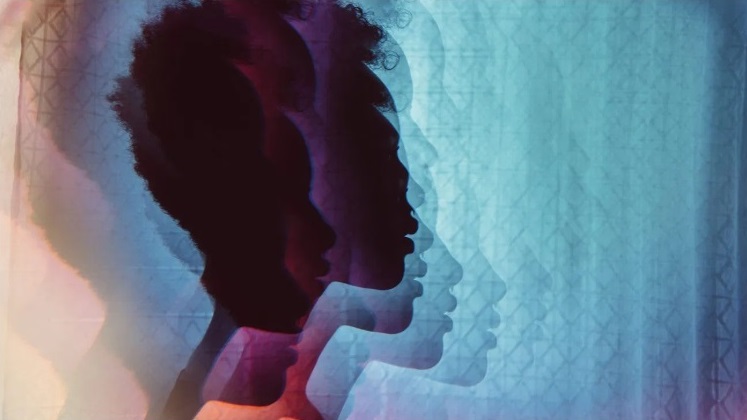Understanding how psychedelics affect the brain has become more and more important as doctors and researchers are learning that these drugs may help relieve depression, anxiety, and PTSD.
While some substances like ketamine and LSD have been extensively studied, researchers are now looking at other overlooked psychedelics, including a South American substance called ayahuasca, a potent beverage historically linked to peoples and tribes of the Amazon rainforest.
A component of ayahuasca is DMT (N,N-dimethyltryptamine), a fast-acting psychedelic known to cause powerful visual hallucinations on a group of healthy individuals.
DMT is one of the primary psychoactive components in the psychedelic brew ayahuasca. It’s prepared by boiling leaves from the Psychotria viridis shrub and stalks of the Banisteriopsis caapi vine.
Now researchers are learning how this drug affects the brain. In a recent study, researchers in the United Kingdom measured the brain’s electrical activity to better understand the effects of DMT.
Their findings give new insight into the drug’s effects on brain function and human consciousness, as well as its potential therapeutic benefits.
What the study found
The research, published in the journal Scientific ReportsTrusted Source, assessed the effects of intravenous DMT.
According to the study’s authors at the Imperial College London Centre for Psychedelic Research, brain activity indicates that the visions produced by DMT share similarities with moments of dreaming.
“From the altered brain waves and participants’ reports, it’s clear these people are completely immersed in their experience. It’s like daydreaming, only far more vivid and immersive. It’s like dreaming but with your eyes open,” said lead author Christopher Timmermann, a PhD candidate in neuropsychopharmacology at Imperial College London.
Ayahuasca is traditionally used for religious and spiritual purposes, in which a shaman or curandero leads individuals through a powerful psychedelic experience.
However, in recent years, the popularity of ayahuasca has grown outside its geographic and cultural home.
The scientific community has also demonstrated increased interest in it, along with other psychedelic substances, including psilocybin mushrooms and MDMA, for a variety of potential therapeutic benefits.
The research published this week doesn’t directly deal with ayahuasca, but it does help demonstrate how DMT affects the brain.
“It is an interesting, well-conducted study, as it adds to the notion that, in many ways, the pattern of brain activity during the psychedelic state is similar to that observed during sleep. Perhaps the nature of the visions often associated with psychedelics is closer to dreams than hallucinations,” said Draulio Araujo, PhD, a professor of neuroscience at the Brain Institute, Federal University of Rio Grande do Norte (UFRN) in Natal, Brazil, who has extensively studied the effects of ayahuasca.
Araujo wasn’t affiliated with the research.
Timmermann and his team recruited 13 healthy individuals to receive an intravenous solution of the drug compared with a placebo. All were fitted with caps utilizing electrodes to capture EEG electrical activity before, during, and after receiving the infusion.
Compared to placebo, DMT resulted in a drop off in alpha waves, the primary electrical wave when humans are awake, and a brief increase in theta waves, indicative of dreaming.
“The normal brain has different frequencies of brain waves, some slower and some faster, and these frequency ranges are given names… These rhythms change based on whether we are awake or drowsy or in the different stages of sleep,” said Dr. Derek Chong, vice chair of neurology and director of epilepsy at Lenox Hill Hospital in New York City.
“During drowsiness, including when drugs are given to cause sleepiness, we will often see the slower frequencies take over. In this study they saw a bit of that, but they also saw rhythmicity (oscillatory power) that I think the authors are arguing shows changes or perhaps release of new brain activity, not just sleepiness,” Chong said.
Brain activity was described as being more chaotic overall and uniquely different from what’s been observed with other psychedelics, such as psilocybin or LSD.
Psychedelics as medicine
The results may also shed some light on DMT’s potential as an antidepressant agent, an area where other researchers have already made forays.
Although limited, prior researchTrusted Source has indicated that DMT (ingested via ayahuasca) has fast-acting antidepressant effects in individuals with depression.
Similarly, psilocybin mushrooms, another classic psychedelic, are also being actively studied in the United States and abroad as a potential treatment for depression.
Still, there remains more research on DMT and ayahuasca before it’s clear whether they hold promise for the treatment of depression or other conditions.
“What I think the study may do is give DMT a status of a product with scientific research and be more acceptable for eventual prescribed usage for psychiatric or psychological purposes,” Chong said.

